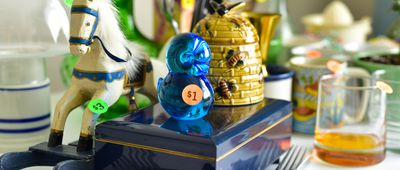Hey there, coffee lover! You probably consider your morning cup of joe essential to kickstarting your day. But amid the myriad ways to craft your daily brew — from French press to instant coffee to Keurig coffee machines — have you heard of the humble moka pot?
If you haven’t, join us as we take a deep dive into this Italian marvel, exploring its origins, use, and mechanics. Who knows — you might be about to meet your new favorite kitchen gadget.
What Is a Moka Pot?
Before Keurigs and fancy espresso machines, there was the moka pot. The small, metallic contraption was invented by Alfonso Bialetti, an engineer, in the 1930s. Since then, the Italian coffee maker has become a household staple across Europe — particularly in Italy. (Seriously, I'm fairly certain every Italian family has one. My credentials? I sTuDieD aBrOaD iN fLoReNcE. Eye roll, I know.)
But what makes the moka pot special? It’s known for producing coffee that's richer than your typical drip, but not as bold as an espresso. Here's everything you need to know about how to use one.
Related: I've Never Had Turkish Coffee, So I Made It at Home. Here's What I Learned During the Process
@goldenbrown.coffee The ultimate stovetop coffee recipe #stovetop #mokapot #bialetti #coffee #espresso ♬ original sound - Golden Brown Coffee
Moka Pot Ingredients & Tools
Before we get started, let's make sure you're equipped with all the tools and ingredients that you'll need:
- Moka Pot: They come in different sizes, from one to 12-cup sizes.
- Coffee: Freshly ground, medium-fine. Think somewhere between sea salt and table salt.
- Water: Cold and preferably filtered.
- Heat Source: You’ll need a stovetop or portable burner.
- Optional: Sugar or milk, depending on how you like to take your coffee.
For more clever life hacks, taste tests, and money-saving tips, please sign up for our free newsletters.
Moka Pot Instructions
- Fill with water: Unscrew your moka pot and fill the bottom chamber with water up to the safety valve.
- Add coffee: Fill the filter basket with your ground coffee. Give it a little shake to even it out but don't press the grounds down too hard, as this can make it difficult for the water to filter through and could result in a weaker brew or potential blockage.
- Assemble and heat: Screw the top and bottom parts together (be careful not to cross-thread). Then place the Moka pot on your stovetop and crank the heat to a medium flame.
- Listen and watch: After a few minutes, you'll begin to hear a gurgling sound. When you start to see coffee coming out of the center post, reduce the heat to low.
- Enjoy: Once the gurgling sound becomes more pronounced, your coffee is almost ready. Turn off the heat, check to make sure the chamber is full, then pour it into your cup and enjoy!
Frequently Asked Questions
What kind of coffee does a moka pot make?
Though it's commonly known as a stovetop espresso maker, coffee made using a moka pot is actually a midway point between drip coffee and espresso. That said, it's still bold, rich, and aromatic. If you prefer your coffee on the stronger side, consider using ground Arabica or Robusta beans, as these have a higher caffeine content compared to medium or dark roasts.
How do you clean a moka pot?
First, wait for it to fully cool down to avoid burns. Then unscrew the pot and dispose of the used coffee grounds. Rinse each part with warm water and place it on a dish rack to air dry. Avoid using harsh soaps or detergents, as these could leave a residue or off-putting taste in your moka pot.
Can I use any type of coffee ground?
While you technically can, stick with a medium-fine grind for the best results. Too coarse and you'll get weak coffee; too fine and you risk clogging the filter. Whether you use expensive, artisanal coffee or cheap coffee is up to you.

 Photo credit: GeorgHanf/istockphoto
Photo credit: GeorgHanf/istockphoto






